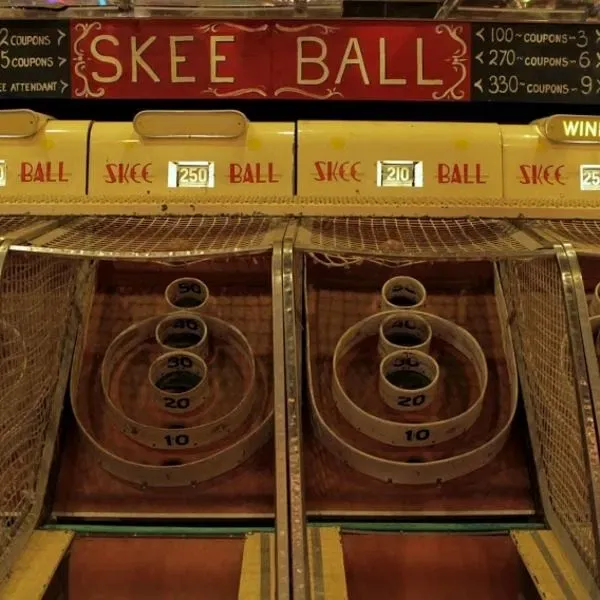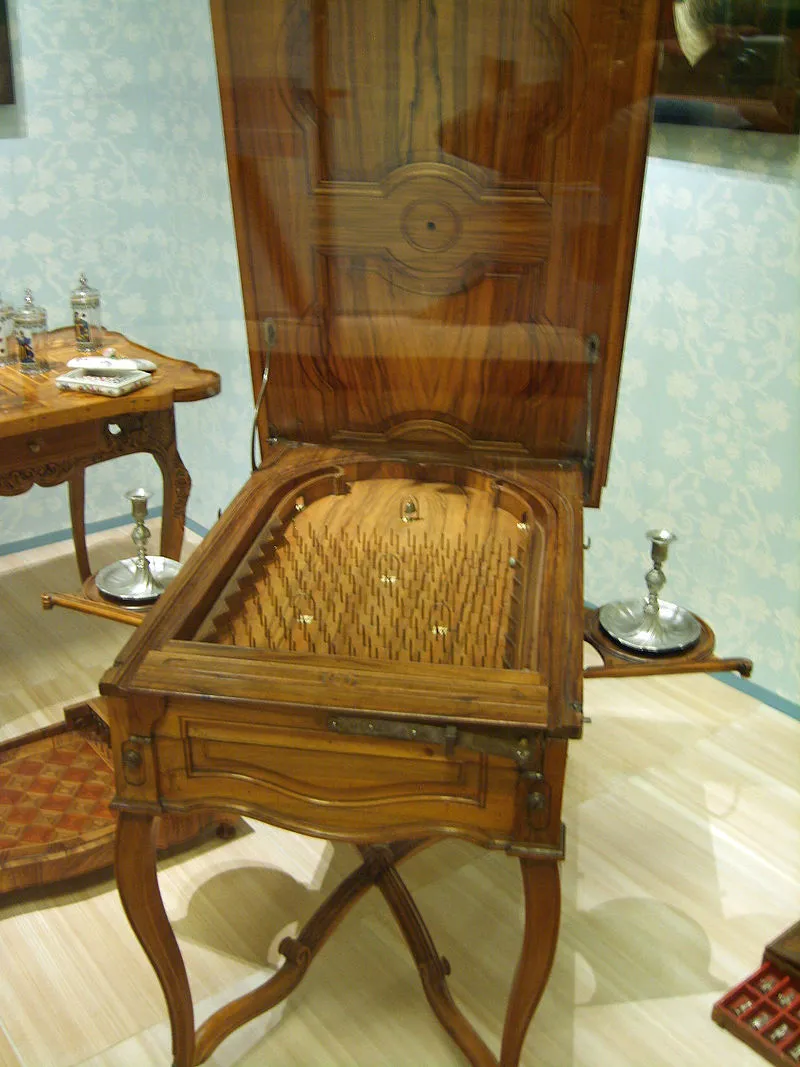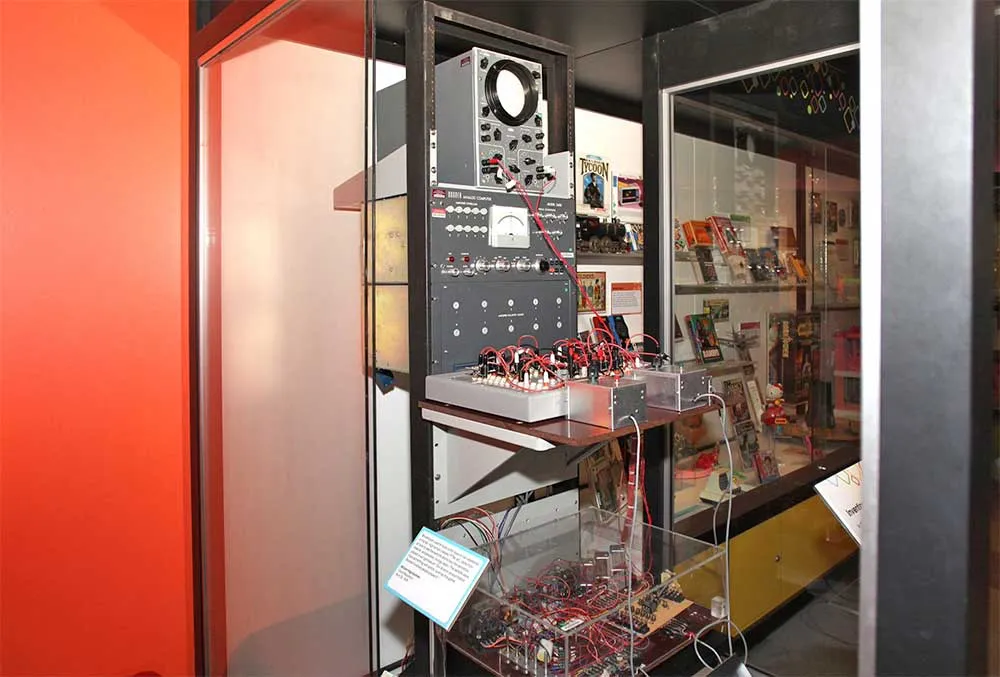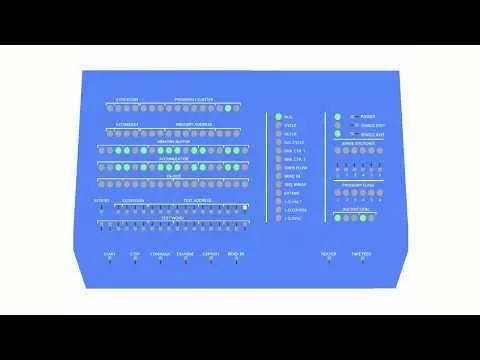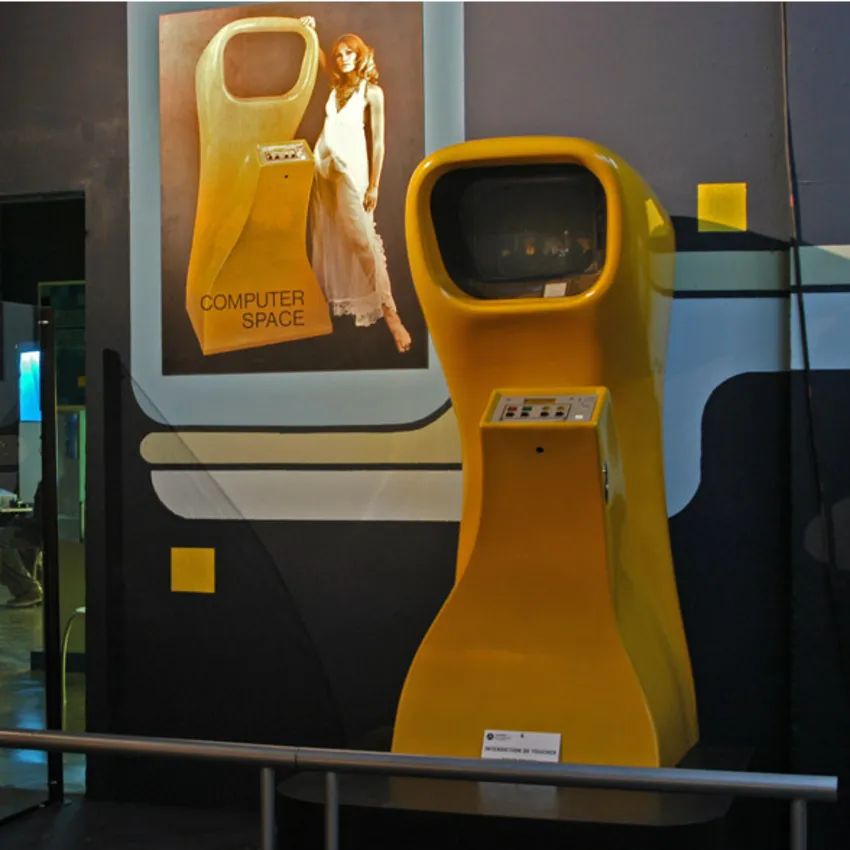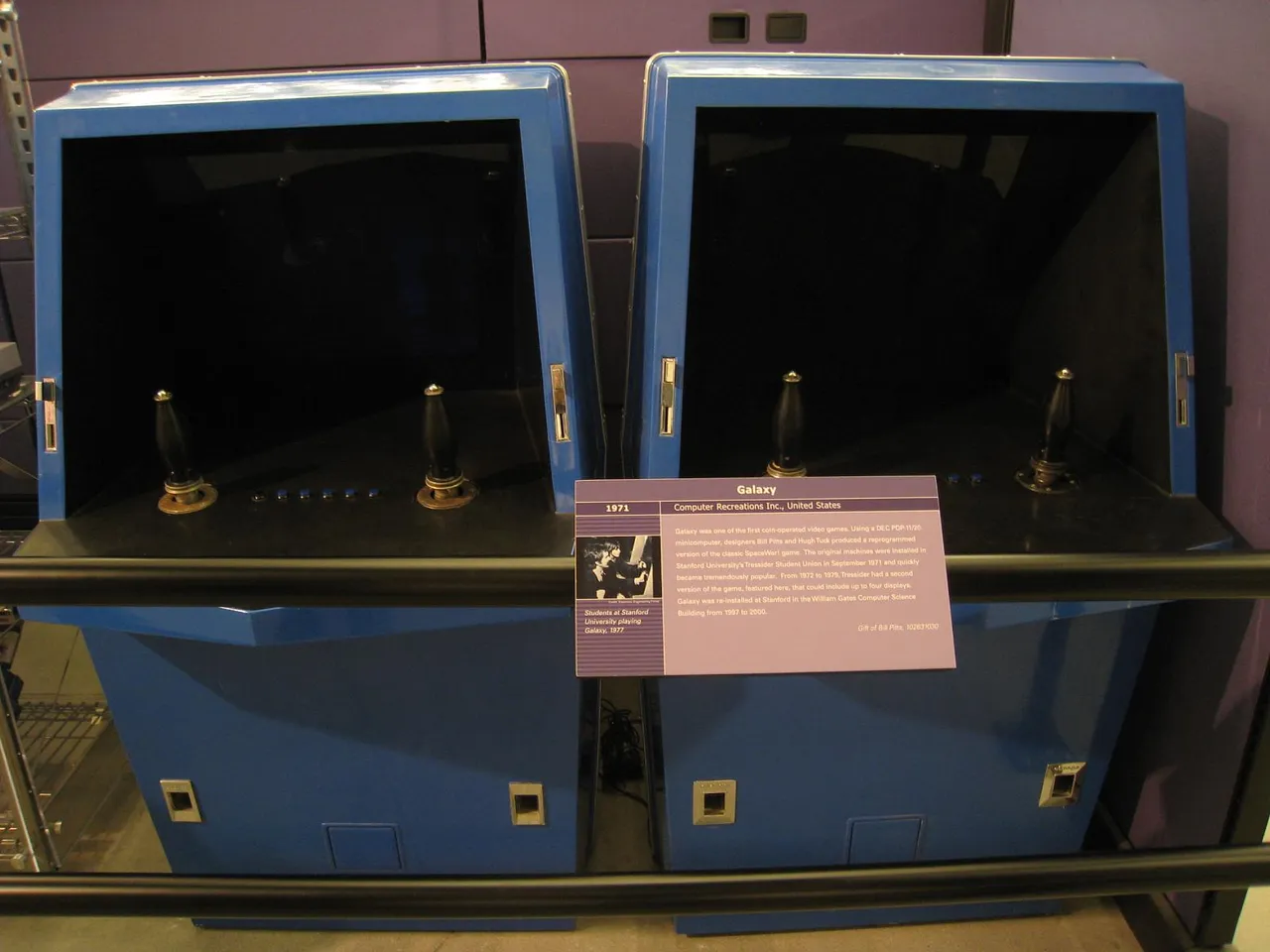
This post is avaliable in both English and Spanish. The Spanish translation was done through DeepL translator.
If you want to read it in English, just scroll below. If you want to read it in Spanish, press CTRL+F and type "-ESP-" (without quotes) on the bar that shows up to get to the Spanish version immediately. Alternatively, just keep scrolling down until the end of the English section.
Este post está disponible en ambos Inglés y Español. La traducción al español fue hecha con el traductor DeepL.
Si quieres leerlo en inglés, solo sigue abajo. Si quieres leerlo en español, presiona CTRL+F y escribe "-ESP-" (sin comillas) en la barra que aparece para llegar a la versión en Español inmediatamente. Alternativamente, solo sigue bajando hasta el final de la sección en Inglés.
English
The topic of arcade hardware evolving as time passed on, from being the apex of videogame technology and experiences to simply becoming an accesible way to play certain games outside of your home but being powered by PCs (along with the advent of emulation meaning that a lot of arcade exclusive games are now playable on PC) is quite fascinating to me, which is what compelled me to write this post which is sort of a multi-part story/project that I will continue as I make progress with the research and redaction.
Despite arcades being at a quite steep situation with the current world event (you know what I mean), these magic cabinets still hold a very dear place in my heart as they were one of my introductions to videogames (the other one being my brothers having a truckload of consoles before I was born) and many others still keep a soft spot for these.
Between the novelty of playing on the original hardware. the idea of playing with others easily if somebody just comes by, and one of the key experiences of arcade games which are the controls; while some games can be replicated with a keyboard or gamepad, there's something that only arcade cabinets can nail like steering wheels and pedals for racing games, light-guns, arcade buttons and stick for fighting games (there are many other examples that I'll elaborate on later); there are quite many reasons why I would still zip instantly to an arcade if it wasn't for the current situation (and that my local mall's arcade closed many years ago 🙃).
But back on the topic, I will explain briefly some few terms that are used on the post just to provide some proper context behind a bit of the wording and the meaning of certain words:
- Electronic game: Game that employs electronics on a playable interactive system. Video games are one kind, but it involves many other kind of machines, like pinball machines and redemption games (be it claw/crane games or skeeball and basketball games).
- Electro-mechanical game: Arcade games that relied on electro-mechanical components to produce images and sounds instead of a monitor display.
- Video game: Electronic game, controlled through an input device and plugged to a monitor and speakers; the most common type of game nowadays (and these are now often simply referred to as “games”).
- Central Processing Unit (CPU): In basic terms, it is the main processing unit of any hardware, be it a computer, console, arcade board, etc. Essentially the main engine of any electronic device.
- Microprocessor: A single chip that acts as the central processing unit, doing the processor tasks. Instead of CPUs, these were the processors that existed and were used on the earliest years.
- Transistor-transistor logic: In simplified terms, hardware that is powered by integrated circuits (chips) connected and programmed through logic, instead of storing data or using processors. This approach was broadly used at the beginning of arcade game history.
- Cathode-ray tube (CRT): Technology made with electron guns and phosphorescent glass screen to display images. The predominant technology for TVs and monitors from the past years, and still used by some nowadays for their monitors for retro gaming, as older games took advantage of the slightly blurry image for dithering and mesh transparency.
Now to finally begin this long journey, we will go through the predecessors of arcade games, and the very first pioneers that would give rise to these magic places.
The origin of arcade games go as far as back as the origin of video games themselves, mainly because several of the earliest video games ever would be the first arcade games; going all the way to the very first games and then coin-operated games, to then start following on the steady rise that the arcade scene would get starting the 70s decade. However, there would be a bit more of history predating these fascinating machines, that would also give an reason for developers to start innovating with technology through arcade video games.
The era before video games
The nature of arcade games would be predated as far as the existence of redemption games and pinball machines: Redemption games would be on amusement parks and other establishments, where you could obtain tickets and/or toys (either through winning or with the tickets you obtained), and one of the oldest redemption games ever is Skee-Ball, invented in 1908, in which you had to swing the ball into one of the holes, with the center one giving most points.
Similarly, pinball machines would predate the videogame industry for at least 30 years before its conception, and even further if we count the Billlard Japonais which was a variant of what would become bagatelle but even had a spring mechanism for launching the ball. If you're a bit clueless about this part, just think that this wooden mammoth is also the grandfather of pachinko machines (because it is).
In the year of 1931, Gottlieb would create the first coin-operated "pinball machine" (since it doesn't have flippers or bumpers yet) Baffle Ball and shoot to the sky in popularity with this machine along with the rest of the machines they followed with. After many years of manufacturing, Gottlieb would then make in 1947 the Humpty Dumpty pinball machine, which would introduce bumpers and flippers, thus being the first proper pinball machine ever made and having many other manufacturers follow on the idea.
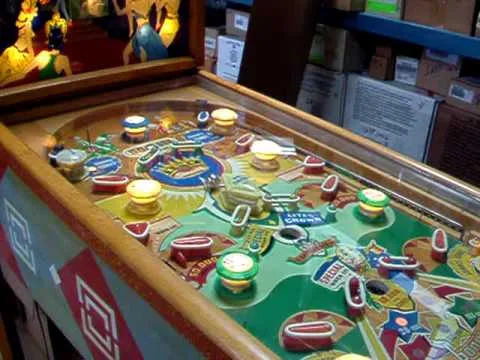
Video uploaded by KingOfTheCrap
That said, redemption games would later receive additions like crane/claw games thanks to the usage of electronical components, and similarly, pinball machines would have electronic scoring, sound effects when hitting bumpers, and even anti-tilt mechanisms (lock the game if tilting or moving over the machine to influence the ball direction is detected) with the technological advancements. However, not only these predecessors would get updates, but there would also be the rise of an whole new industry with the upcoming knowledge of following years.
The conception of the first video games
As it was made clear before, to get started with the earliest arcade games, we have to talk about the earliest video games in general: In the year of 1958, William Higganbottom made Tennis for Two, which is considered one of the first electronic video games in history (if not the first).
It was avaliable at the Brookhaven National Laboratory's annual public exhibition on that timer, with the game being made on an analog computer, and displayed on an oscilloscope. The picture below is a recreation of this mythical demostration being displayed at the eGame Revolution exhibit at The Strong Museum® of Play in Rochester, New York.
Now, to give a bit of an context about this, analog computers are NOT the same thing as computers as we know it today, as analog computers were composed of physical pieces that moved through electrical, mechanical and/or hydraulical components, and were often used back then for things like aircraft flight simulators, or mechanisms in aircrafts themselves. For that matter, oscilloscopes were used for rather basic wave displays, as monitors didn't exist until the early 1990s, but it should be noted how one was used to make an interactive game of all things.
William got the idea after finding out that one of the computers avaliable in the exhibition could simulate trajectories with wind resistance, and designed a game that took advantage of this with a ball that could be sent back and forth with different speeds, simulating a game of Tennis. It used two aluminum controllers, each one with a button (to hit the ball) and a knob (to determine the angle of the ball's trajectory when hit).
Evidently, both the game and the hardware were quite primitive, but it would have an enormous impact in the future, being one of the very fist video games, and it enjoyed good popularity in the public exhibition where it was showcased.
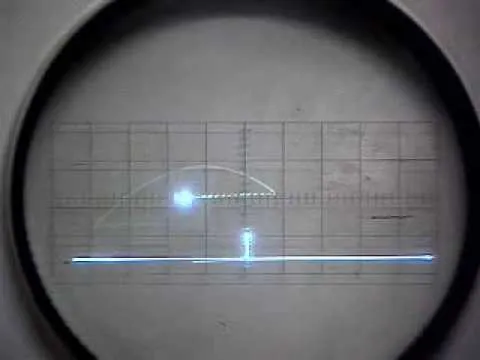
Video uploaded by Dan C
Meanwhile in the year of 1962, Steve Rusell, Martin Graetz and Wayne Wiitanen would create the game Spacewar! using the PDP-1 minicomputer, which had 4096 words of memory in its standard installation (equal to just 8 kilobytes); and could be upgraded to 65,536 words (equal to 131 kilobytes). This game would be the father of all videogames, thanks to its popularity on the programming community and gameplay being properly interactive (unlike Tennis for Two), inspiring many other videogames on the earliest and latest days.
Coming from yet another exhibition, Spacewar! was developed and showcased at the Massachusets Institute of Technology (MIT) after a DEC PDP-1 minicomputer was installed in the building, after being released in 1960, and the three men thought on the idea of Spacewar after pondering what could be done with the PDP-1's new monitor, in which they decided to make a spaceship game to show two-dimensional movement.
On the video below there's footage of a FPGA running Spacewar and other PDP-1 demos; a FPGA is the closest thing to original hardware as it is even more accurate than software emulation, but with the benefit of a high-quality display.
The initial version was reportedly missing decorative stars and the central star causing ships to pull around it with gravity, which were added in the revision that was publicly unveiled. The game had two ships that needed to destroy each other, with the controls being turning around, a button for thrusting/accelerating, and a button for shooting. Just like with Tennis for Two, as neither controllers nor arcade stick as we know it today didn't exist back then, the game was controlled through a big box with two sticks (one for turning and one for thrusting) and a big button for shooting.
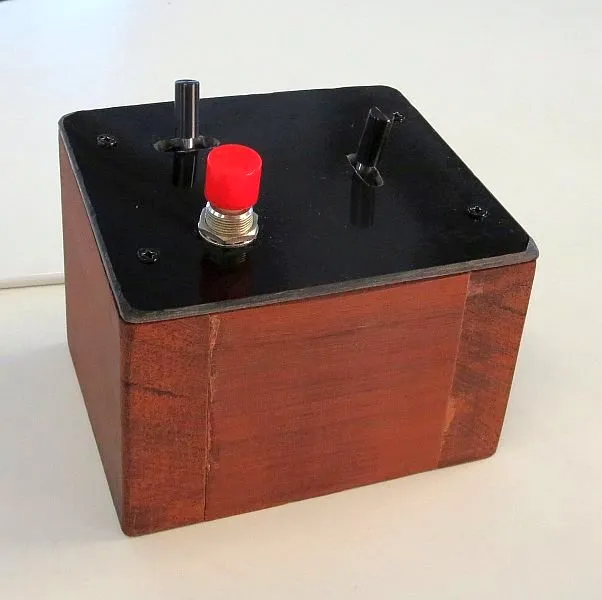
Photo of modern recreation of the Spacewar controller by Thomas Tilley, taken from his website.
It could be described as a "versus" variant of Asteroids; except that this one was many years before that (and there are no asteroids to be seen), and is justifably considered the grandfather of all videogames. Of course, it is also preserved through PDP-1 emulation today (not all of the earliest games are emulated, but some simulators exist in their place and many later ones are emulated through MAME). And intriguingly (but understandably) enough, Spacewar's concept would also be the base for the very first electronic arcade games ever.
The first electromechanical arcade games
So far we would go from 1908's Skee Ball games and 1947's first pinball machine to 1958 with Tennis for Two, and the first proper electronic videogame with Spacewar in 1961. Now while the very first electronic videogame featuring as an arcade game would come in 1969, it is to note the presence of electromechanical arcade games, as they were the first games that worked specifically by allowing people to insert coins for games.
Now, while the first proper pinball machines would somewhat be electromechanical arcade games (due to their technology and coin-requeriment), the first full-fledged ones would be brought with a concept that evolved into what we know today as light-gun games (except that they were at first more like attraction games until technology improved to allow more creativity and other kind of games).
The very first electromechanical game would be Periscope in 1965 published under what would become Namco today; but is also credited to be exported in 1969, except by SEGA instead of Namco (there's an extensive article covering this debate in Gaming Alexandria). It was similar in concept to a light-gun game, but you peered through the periscope to aim and fire torpedos at enemy submarines. It also set the standard for a quarter being used as a credit for later arcade games in America.
A closer game to the light-gun idea would be SEGA's Duck Hunt in 1968, that also used projections for displaying ducks that could be shot down with a mounted shotgun controller in the cabinet.
The year of 1969 would also have SEGA bring more genres into the fray, with Grand Prix being a racing game, and Missile being a missile-shooting game against enemy fighters. These games would have some few knockoffs around that time, mostly from Midway. These kind of games are quite fascinating in the way they look and how they actually work, which is why I prefer to provide videos of these cabinets in action.
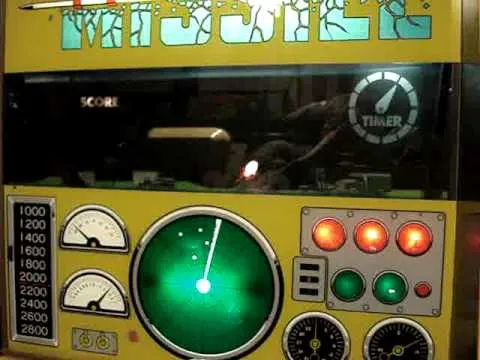
Video uploaded by wideopenthrottle36
Of course electromechanical games would still keep showing up all the way until the end of the 70s, with two particular highlights I noticed during my research: The first one is SEGA's Moto Champ from 1973, which was visibly unique at first sight with you controlling one of the 5 bike props racing along a scrolling white lane and competing for the first place. It looks quite surreal as a weird mix between an old racing videogame, the idea of a RC car/bike and playing with toys.

Video uploaded by Kevin Keinert
The second highlight is Namco's F1 from 1976, which goes to the other extreme with the scale and feeling: A huge projector showing your Formula One car throttling with speed along the circle track- a fiery scene of flames if you crash! It looks incredibly smooth for its time, with the internal setup (shown in the video below) being even more impressive with two small cars actually racing on a small spinning circle being displayed into a first-person thrill. And if this game seems familiar to you from a certain old movie with zombies on a mall, this game was indeed featured in the 1978 movie Dawn of the Dead!
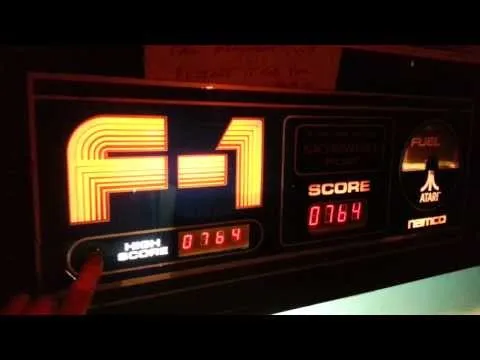
Video uploaded by Billy Seven
Transistor-to-transistor logic and the first electronic arcade game
Now, while electromechanical games were getting more creative around the beginning of the 70s, they would be slowly getting shafted by the rise of electronic arcade games. A recurring feature in the earliest arcade games would be the use of transistor-to-transistor logic to power the game, as processors from computers would be prohibitive in costs at first; so chips would be connected in a board and the game would be completely programmed into them. This was also predating the usage of ROMs for storing game data for that matter.
With that said, the usage of TTL was perfect for Nolan Bushnell and Ted Dabney in order to produce an arcade adaptation of Spacewar. Initially prototyping the game in a Data General Nova minicomputer in 1970, the usage of custom-made hardware (TTL) was adopted after the minicomputer used wasn't powerful enough for the game (and was the cheapest one possible to find, as more expensive ones were out of range). After successful testing, they would found Syzygy Engineering in January 1971; and after more hard work as well as collaborating with Nutting Associates, production would start in November for cabinets to start showing up in campuses and bars.

Video uploaded by andys-arcade
This game would be similar to Spacewar in its controls, but the first versions were single player and had you blast UFOs on the screen without colliding with them (and you could wrap around the screen); with the addition of a score counter. A year later, a two-player version would be released, which had a mode much closer to Spacewar itself, in which two ships would need to take out each other, but there would be a time counter and a score counter for both ships. This version would come in a green-colored variant of the original cabinet, which was a yellow uniquely shaped stand with a monitor.
Around the same year as Computer Space started production, Bill Pits and Hugh Tuck also developed an arcade variant of Spacewar called Galaxy Game, and was unveiled in November 1971 at the Stanford University. While the sources vary whether this was shown before or after Computer Space's first prototype unveiling, it was developed specifically as two-player on launch and ran on a PDP-11 computer instead of custom hardware; something that would restrict its installation (and further spreading) to that area due to the costs it carried unlike Computer Space.
With all of this said, Ted and Nolan would distance from Nutting Associates and then rebrand Syzygy Enteritainment in June 27, 1972. This marks the end of the current part as this is where we would finally get at the meteoric rise of arcade games with the first innovators of the idea; as the name of the rebranded company would happen to be none other than Atari.
Next in History and Evolution of Arcade Hardware: Atari takes off with the mythical Pong and Breakout, but Taito and Midway wouldn't stay behind on the wake of a new industry. Many first-time concepts like ROMs for storing game data as well as home adaptations of arcade games would appear as well with the impending approach of classics that would leave a mark in the videogame industry ever since!
If you just finished reading the entire post, thank you so much. This one topic is a very fascinating piece of history for me that I always wanted to talk about from start to end, and it is thanks to all of you and your support that I'm able to keep pushing this much in content.
To keep up with this one will be a quite daunting task for me, specially with weekly univerisity homework coming over to my house to poke me with a stick until I explode, but I will definitely do my best to continue this journey that has only begun. However, I might end up covering games as usual instead on the meantime, so pretty much the next part will be done when its done and that's all what I can promise :p
See you next time!
Español -ESP-
El tema de la evolución del hardware de las máquinas recreativas con el paso del tiempo, pasando de ser la cúspide de la tecnología y las experiencias de los videojuegos a convertirse simplemente en una forma accesible de jugar a ciertos juegos fuera de casa, pero alimentados por PC (junto con la llegada de la emulación, lo que significa que muchos juegos exclusivos de las máquinas recreativas son ahora jugables en el PC) es bastante fascinante para mí, que es lo que me obligó a escribir este post que es una especie de historia/proyecto de varias partes que continuaré a medida que avance con la investigación y la redacción.
A pesar de que los salones recreativos se encuentran en una situación bastante complicada con el acontecimiento mundial actual (ya sabéis a lo que me refiero), estos gabinetes mágicos siguen ocupando un lugar muy querido en mi corazón, ya que fueron una de mis introducciones a los videojuegos (la otra fue que mis hermanos tuvieran un camión lleno de consolas antes de que yo naciera) y muchos otros siguen guardando un punto débil para estos.
Entre la novedad de jugar en el hardware original. la idea de jugar con otros fácilmente si alguien se acerca, y una de las experiencias clave de los juegos arcade que son los controles; mientras que algunos juegos pueden ser replicados con un teclado o gamepad, hay algo que sólo los gabinetes arcade pueden clavar como los volantes y pedales para los juegos de carreras, las pistolas de luz, los botones arcade y el stick para los juegos de lucha (hay muchos otros ejemplos que elaboraré más adelante); hay bastantes razones por las que seguiría yendo al instante a una recreativa si no fuera por la situación actual (y eso que la recreativa de mi centro comercial local cerró hace muchos años 🙃).
Pero volviendo al tema, voy a explicar brevemente algunos términos que se utilizan en el post sólo para proporcionar un contexto adecuado detrás de un poco de la redacción y el significado de ciertas palabras:
- Juego electrónico: Juego que emplea la electrónica en un sistema interactivo jugable. Los videojuegos son un tipo, pero implica muchos otros tipos de máquinas, como las máquinas de pinball y los juegos de redención (ya sean juegos de garra/grúa o juegos de skeeball y baloncesto).
- Juego electromecánico: Juegos de arcade que se basan en componentes electromecánicos para producir imágenes y sonidos en lugar de una pantalla.
- Videojuego: Juego electrónico, controlado a través de un dispositivo de entrada y conectado a un monitor y a unos altavoces; es el tipo de juego más común hoy en día (y ahora se les suele llamar simplemente "juegos").
- Unidad central de procesamiento (CPU): En términos básicos, es la unidad de procesamiento principal de cualquier hardware, ya sea un ordenador, una consola, una placa arcade, etc. Esencialmente, es el motor principal de cualquier dispositivo electrónico.
- Microprocesador**: Un único chip que actúa como unidad central de proceso, realizando las tareas del procesador. En lugar de las CPU, estos eran los procesadores que existían y se utilizaban en los primeros años.
- Lógica de transistores: En términos simplificados, hardware que se alimenta de circuitos integrados (chips) conectados y programados a través de la lógica, en lugar de almacenar datos o utilizar procesadores. Este enfoque se utilizó ampliamente al principio de la historia de los juegos de arcade.
- Tubo de rayos catódicos (CRT): Tecnología realizada con cañones de electrones y pantalla de vidrio fosforescente para mostrar imágenes. La tecnología predominante para los televisores y monitores de los años pasados, y que todavía utilizan algunos hoy en día para sus monitores de juegos retro, ya que los juegos antiguos aprovechaban la imagen ligeramente borrosa para el dithering y la transparencia de la malla.
Ahora, para empezar por fin este largo viaje, vamos a repasar los predecesores de los juegos arcade, y los primeros pioneros que darían lugar a estos mágicos lugares.
El origen de los juegos de arcade se remonta tanto como el origen de los propios videojuegos, principalmente porque varios de los primeros videojuegos de la historia serían los primeros juegos de arcade; llegando hasta los primeros juegos y luego los juegos de monedas, para luego comenzar a seguir el ascenso constante que la escena de arcade obtendría a partir de la década de los 70. Sin embargo, habría un poco más de historia anterior a estas fascinantes máquinas, que también daría una razón para que los desarrolladores comenzaran a innovar con la tecnología a través de los videojuegos arcade.
La era anterior a los videojuegos
La naturaleza de los juegos arcade sería anterior a la existencia de los juegos de redención y las máquinas de pinball: Los juegos de redención estarían en los parques de atracciones y otros establecimientos, en los que podías obtener entradas y/o juguetes (ya sea ganando o con las entradas obtenidas), y uno de los juegos de redención más antiguos es el Skee-Ball, inventado en 1908, en el que había que meter la bola en uno de los agujeros, siendo el del centro el que más puntos daba.
En el año 1931, Gottlieb crearía la primera "máquina de pinball" que funcionaba con monedas (ya que aún no tenía flippers ni bumpers) Baffle Ball y se dispararía al cielo en popularidad con esta máquina junto con el resto de las máquinas que le siguieron. Después de muchos años de fabricación, Gottlieb haría en 1947 la máquina de pinball Humpty Dumpty, que introduciría bumpers y flippers, siendo así la primera máquina de pinball propiamente dicha que se hizo y haciendo que muchos otros fabricantes siguieran la idea.

Video subido por KingOfTheCrap
Sin embargo, los juegos de redención recibirían más tarde adiciones como los juegos de grúa/garra gracias al uso de componentes electrónicos, y del mismo modo, las máquinas de pinball tendrían puntuación electrónica, efectos de sonido al golpear los bumpers, e incluso mecanismos anti-inclinación (bloquean el juego si se detecta inclinación o movimiento sobre la máquina para influir en la dirección de la bola) con los avances tecnológicos. Sin embargo, no sólo estos predecesores recibirían actualizaciones, sino que también se produciría el surgimiento de toda una nueva industria con el conocimiento de los años siguientes.
La concepción de los primeros videojuegos
Como ya quedó claro, para empezar con los primeros juegos de arcade, tenemos que hablar de los primeros videojuegos en general: En el año 1958, William Higganbottom creó el Tennis for Two, que se considera uno de los primeros videojuegos electrónicos de la historia (si no el primero).
Se pudo ver en la exposición pública anual del Laboratorio Nacional de Brookhaven en ese momento, con el juego realizado en un ordenador analógico, y mostrado en un osciloscopio. La imagen de abajo es una recreación de esta mítica demostración que se exhibe en la exposición eGame Revolution de The Strong Museum® of Play en Rochester, Nueva York.
Ahora bien, para contextualizar un poco esto, los ordenadores analógicos NO son lo mismo que los ordenadores que conocemos hoy en día, ya que los ordenadores analógicos estaban compuestos por piezas físicas que se movían a través de componentes eléctricos, mecánicos y/o hidráulicos, y a menudo se utilizaban en aquella época para cosas como simuladores de vuelo de aviones, o mecanismos en los propios aviones. Por lo demás, los osciloscopios se utilizaban para mostrar ondas más bien básicas, ya que los monitores no existieron hasta principios de los años 90, pero hay que destacar cómo se utilizó uno para hacer un juego interactivo de todas las cosas.
A William se le ocurrió la idea después de descubrir que uno de los ordenadores disponibles en la exposición podía simular trayectorias con resistencia al viento, y diseñó un juego que aprovechaba esto con una pelota que podía enviarse de un lado a otro con diferentes velocidades, simulando un juego de Tenis. Utilizaba dos mandos de aluminio, cada uno con un botón (para golpear la pelota) y un mando (para determinar el ángulo de la trayectoria de la pelota al ser golpeada).
Evidentemente, tanto el juego como el hardware eran bastante primitivos, pero tendría una enorme repercusión en el futuro, siendo uno de los primeros videojuegos, y gozó de buena popularidad en la exposición pública en la que se presentó.

Video subido por Dan C
Mientras tanto, en el año 1962, Steve Rusell, Martin Graetz y Wayne Wiitanen crearían el juego Spacewar! utilizando el minicomputador PDP-1, que contaba con 4096 palabras de memoria en su instalación estándar (equivalente a tan sólo 8 kilobytes); y que podía ampliarse hasta 65.536 palabras (equivalente a 131 kilobytes). Este juego sería el padre de todos los videojuegos, gracias a su popularidad en la comunidad de programadores y a que el juego era propiamente interactivo (a diferencia del Tennis for Two), inspirando a muchos otros videojuegos en los primeros y últimos tiempos.
Spacewar! fue desarrollado y presentado en el Instituto Tecnológico de Massachusets (MIT) después de que se instalara en el edificio un minicomputador DEC PDP-1, tras ser lanzado en 1960, y los tres hombres pensaron en la idea de Spacewar después de meditar lo que se podía hacer con el nuevo monitor del PDP-1, en el que decidieron hacer un juego de naves espaciales para mostrar el movimiento bidimensional.
En el vídeo de abajo hay imágenes de una FPGA ejecutando Spacewar y otras demos de la PDP-1; una FPGA es lo más parecido al hardware original, ya que es más precisa que la emulación por software, pero con la ventaja de una pantalla de alta calidad.
Al parecer, a la versión inicial le faltaban las estrellas decorativas y la estrella central que hace que las naves tiren a su alrededor con la gravedad, que se añadieron en la revisión que se dio a conocer públicamente. El juego tenía dos naves que debían destruirse mutuamente, y los controles eran girar, un botón para empujar/acelerar y otro para disparar. Al igual que con Tennis for Two, como en aquella época no existían ni los mandos ni los sticks arcade tal y como los conocemos hoy en día, el juego se controlaba a través de una gran caja con dos sticks (uno para girar y otro para empujar) y un gran botón para disparar.

Foto de la recreación moderna del mando de Spacewar por Thomas Tilley, tomada de su página web.
Podría describirse como una variante "versus" de Asteroids; salvo que éste es de muchos años antes (y no hay asteroides que ver), y se considera con razón el abuelo de todos los videojuegos. Por supuesto, también se conserva a través de la emulación de PDP-1 hoy en día (no todos los primeros juegos están emulados, pero existen algunos simuladores en su lugar y muchos posteriores están emulados a través de MAME). Y curiosamente (pero comprensiblemente), el concepto de Spacewar también sería la base de los primeros juegos electrónicos de arcade de la historia.
Los primeros juegos arcade electromecánicos
Hasta aquí iríamos desde los juegos de Skee Ball de 1908 y el primer pinball de 1947 hasta 1958 con Tennis for Two, y el primer videojuego electrónico propiamente dicho con Spacewar en 1961. Ahora bien, aunque el primer videojuego electrónico como juego de arcade llegaría en 1969, hay que destacar la presencia de los juegos de arcade electromecánicos, ya que fueron los primeros juegos que funcionaron específicamente permitiendo a la gente introducir monedas para jugar.
Ahora bien, mientras que las primeras máquinas de pinball propiamente dichas serían en cierto modo juegos arcade electromecánicos (debido a su tecnología y a la introducción de monedas), las primeras propiamente dichas llegarían con un concepto que evolucionó hasta lo que hoy conocemos como juegos de pistola de luz (con la salvedad de que al principio eran más bien juegos de atracción hasta que la tecnología mejoró para permitir más creatividad y otro tipo de juegos).
El primer juego electromecánico sería Periscope en 1965 publicado bajo lo que hoy sería Namco; pero también se acredita que fue exportado en 1969, sólo que por SEGA en lugar de Namco (hay un extenso artículo que cubre este debate en Gaming Alexandria). Su concepto era similar al de un juego de armas ligeras, pero se miraba a través del periscopio para apuntar y disparar torpedos a los submarinos enemigos. Además, marcó la pauta para que una moneda de 25 centavos se utilizara como crédito en los juegos de arcade posteriores en Estados Unidos.
Un juego más cercano a la idea de la pistola de luz sería el Duck Hunt de SEGA en 1968, que también utilizaba proyecciones para mostrar patos que podían ser abatidos con un mando de escopeta montado en el mueble.
En 1969, SEGA también introdujo más géneros en el mercado: Grand Prix, un juego de carreras, y Missile, un juego de disparos de misiles contra cazas enemigos. Estos juegos tendrían algunas imitaciones en esa época, sobre todo de Midway. Este tipo de juegos son bastante fascinantes por su aspecto y su funcionamiento real, por lo que prefiero ofrecer vídeos de estos gabinetes en acción.

Video subido por wideopenthrottle36
Por supuesto, los juegos electromecánicos seguirían apareciendo hasta el final de los años 70, con dos puntos destacados que observé durante mi investigación: El primero es el Moto Champ de SEGA de 1973, que era visiblemente único a primera vista, ya que controlabas uno de los 5 puntales de las motos que corrían por un carril blanco en movimiento y competían por el primer puesto. Parece bastante surrealista como una extraña mezcla entre un viejo videojuego de carreras, la idea de un coche/moto de RC y el juego con juguetes.

Vídeo subido por Kevin Keinert
El segundo plato fuerte es "F1" de Namco de 1976, que se va al otro extremo con la escala y la sensación: Un enorme proyector que muestra tu coche de Fórmula 1 acelerando a lo largo de la pista circular: ¡una ardiente escena de llamas si te estrellas! Tiene un aspecto increíblemente fluido para su época, y la configuración interna (que se muestra en el vídeo de abajo) es aún más impresionante, con dos coches pequeños que corren realmente en un pequeño círculo giratorio que se muestra en una emoción en primera persona. Y si este juego te resulta familiar por cierta película antigua con zombis en un centro comercial, ¡este juego apareció de hecho en la película de 1978 El amanecer de los muertos!

Video subido por Billy Seven
La lógica de transistores y el primer juego de arcade electrónico
Ahora bien, mientras los juegos electromecánicos se volvían más creativos a principios de los años 70, poco a poco se irían viendo perjudicados por el auge de los juegos arcade electrónicos. Una característica recurrente en los primeros juegos de arcade sería el uso de la lógica de transistor a transistor para alimentar el juego, ya que los procesadores de los ordenadores tendrían un coste prohibitivo al principio; así que los chips se conectaban en una placa y el juego se programaba completamente en ellos. Esto también fue anterior al uso de las ROM para almacenar los datos del juego.
Dicho esto, el uso del TTL fue perfecto para que Nolan Bushnell y Ted Dabney produjeran una adaptación arcade de Spacewar. Inicialmente, el prototipo del juego en un minicomputador Data General Nova en 1970, el uso de hardware hecho a medida (TTL) fue adoptado después de que el minicomputador utilizado no era lo suficientemente potente para el juego (y era el más barato posible de encontrar, ya que los más caros estaban fuera de alcance). Tras el éxito de las pruebas, fundarían Syzygy Engineering en enero de 1971; y después de más trabajo, así como de colaborar con Nutting Associates, la producción comenzaría en noviembre para que los armarios empezaran a aparecer en los campus y bares.
Este juego sería similar a Spacewar en sus controles, pero las primeras versiones eran para un solo jugador y te hacían explotar ovnis en la pantalla sin colisionar con ellos (y podías envolver la pantalla); con el añadido de un contador de puntuación. Un año más tarde, saldría a la venta una versión para dos jugadores, que tenía un modo mucho más parecido al propio Spacewar, en el que dos naves debían eliminarse mutuamente, pero había un contador de tiempo y otro de puntuación para ambas naves. Esta versión vendría en una variante de color verde del gabinete original, que era un soporte amarillo de forma única con un monitor.
Alrededor del mismo año en que Computer Space comenzó su producción, Bill Pits y Hugh Tuck también desarrollaron una variante arcade de Spacewar llamada Galaxy Game, y fue presentada en noviembre de 1971 en la Universidad de Stanford. Aunque las fuentes varían en cuanto a si se mostró antes o después de la presentación del primer prototipo de Computer Space, se desarrolló específicamente como juego para dos jugadores en el lanzamiento y se ejecutaba en un ordenador PDP-11 en lugar de en hardware personalizado; algo que restringiría su instalación (y posterior difusión) a esa zona debido a los costes que conllevaba a diferencia de Computer Space.
Con todo esto dicho, Ted y Nolan se distanciarían de Nutting Associates y luego renombrarían Syzygy Enteritainment en junio 27 de 1972. Esto marca el final de la parte actual, ya que aquí es donde finalmente llegaríamos al ascenso meteórico de los juegos de arcade con los primeros innovadores de la idea; ya que el nombre de la empresa renombrada pasaría a ser nada menos que Atari.
Siguiente en la historia y evolución del hardware de arcade: Atari despega con los míticos Pong y Breakout, pero Taito y Midway no se quedarían atrás en la estela de una nueva industria. Aparecerían también muchos conceptos inéditos como las ROMs para almacenar datos de los juegos, así como adaptaciones domésticas de los juegos arcade, con la inminente llegada de clásicos que dejarían huella en la industria del videojuego desde entonces.
Si acabas de terminar de leer todo el post, muchas gracias. Este tema es un trozo de historia muy fascinante para mí del que siempre he querido hablar de principio a fin, y es gracias a todos ustedes y su apoyo que soy capaz de seguir avanzando tanto en contenido.
Mantenerme al día con esto será una tarea bastante desalentadora para mí, especialmente con los deberes semanales de la universidad que vienen a mi casa para pincharme con un palo hasta que explote, pero definitivamente haré todo lo posible para continuar este viaje que sólo ha comenzado. Sin embargo, puede que acabe cubriendo los juegos como de costumbre mientras tanto, así que la próxima parte estará hecha cuando esté hecha y eso es todo lo que puedo prometer :p
Nos vemos pronto!
